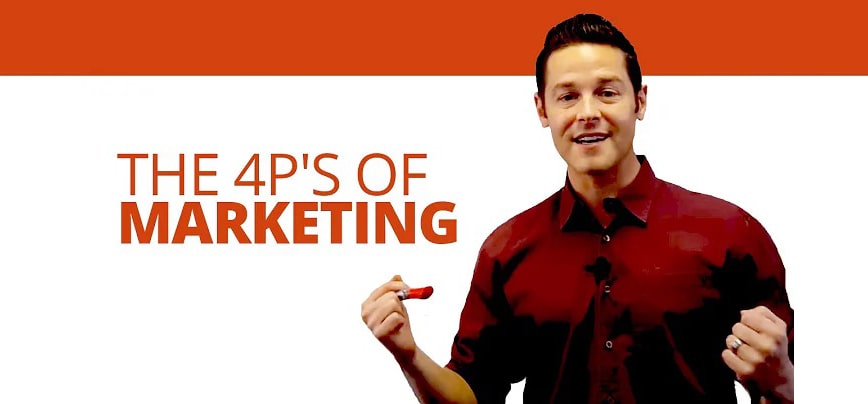The term “4 ps of marketing” is foreign to the minds of many company owners. Which is terrible given that they are the fundamental building blocks of effective marketing in company. The ideas, despite their seeming straightforwardness at first glance, really include a great deal of nuance and complexity.
There is a good chance that you are currently using the 4 ps of marketing without having a clear understanding of what they are or why they are important. Your marketing efforts will only be successful in the long run if you take a purposeful approach to the four Ps: positioning, pricing, placement, and promotion.
An explanation of the history behind the four Ps of marketing
It’s true that company marketing has gone a very long way when it was just getting started. Despite this, the core components have not changed for a very long time.
In 1964, Neil Borden was the one who brought widespread attention to that foundation. In the essay that he released titled “The Concept of the Marketing Mix,” he outlined the four components of marketing, or “ps.” Even if large corporations moved rapidly to take notice of his strategies, this concept is just as vital for smaller corporations.
Product, the first and most important “P” in marketing
What kind of products does your firm sell? Whether it be coffee cups, ankle boots, candy bars, violin lessons, or real estate services, the best way to characterize a product (or service) is what a company makes accessible to the customer. This may be anything from coffee mugs to ankle boots to candy bars. The purpose of your marketing should be to assist your product or service stand out from the competition.
What you are selling could, at first glance, seem to be rather apparent. As a result, you have a tendency to disregard this first proposition. However, the object that you sell is merely one aspect of the product.
It is also important to consider what distinguishes that item from the products or services offered by your rivals.
You need to have a means to differentiate yourself from your competitors, whether that rivalry is local (for instance, dental services) or worldwide (for instance, online coaching). Because there is very little room for expansion and success in today’s market if what you provide or how you provide it is not distinctive from anything else that is already available.
Take for instance the fact that you provide guitar lessons to students. It’s possible that someone is looking for a local guitar instructor; if so, why should they choose you out of the other twenty instructors that come up in their search results?
Perhaps Dave Grohl was the one who taught you that style.
Is it possible that you provide a greater number of classes for a lower total cost?
When marketing a product or service in your company, it is important to think about what makes you and your offer stand out from the rest of the crowd. This makes it simpler for customers to choose your product over those of your competitors.
If you are unsure of what makes you stand out from the competition, you can always question your prospective or present consumers! Through the use of a simple survey, you may connect with the people on your email list. Using the above scenario as an example, you may provide a question that encourages free-form responses, such as:
What exactly is it that you do not like about the local environment of guitar lessons?
Make use of the replies you get to customize your service to the people who are already using it, and you can also notice a rise in sales, which is something you haven’t been seeing before.
If you get a range of replies, you may want to consider doing a/b testing to determine which “stand out characteristic” is most likely to connect with the people who make up your target audience.
Price, the second “P” in the marketing mix
There is a considerable chance that you have already determined your prices. On the other hand, if you’re having trouble making sales, you can start to ponder whether or not the problem is caused by the prices you’re charging.
Although it is not difficult to understand the principle, many businesses find it challenging to actually establish their prices. It is possible that owners of businesses may find themselves pondering the question of how to display the quality of what they offer while still ensuring that it is competitively priced.
When doing company marketing, you may find yourself wondering whether you are devaluing your product or service if you establish a pricing point that is lower than that of your competitors. And in a same vein, if you set a greater price for your services, are you expecting too much?
The response is going to change depending on the company that you ask. However, there are questions that you can ask yourself in order to potentially make the answer more apparent for your own company. Obviously, you need to have a clear picture of your ideal customer avatar in order for any of them to be successful (ICA).
How much do my top five rivals charge for services that are comparable to mine?
How much lower can I go with my prices while still reaching the income targets I set?
How much can I raise my prices before I lose the majority of my ideal customers?
The third “P” in marketing: Place
Where exactly are you based out of? This is not something that simply applies to traditional establishments made of brick and mortar. It is also applicable to the world wide web.
It’s possible that you’re doing more damage than good to your company if you promote or advertise your company on websites that aren’t frequented by your target demographic of customers. Consider social media platform audiences. People you can connect with via Instagram are not the same as those you can connect with through Facebook.
Many companies make the mistake of believing that their customers will come to them rather than actively seeking them out. While this is sometimes true, it’s still a bad rule of business. Your primary focus should always be on getting in front of your target audience.
Back to our guitar instruction example. It is unlikely that you will see much success by publicizing local guitar lessons on a network such as LinkedIn. Users of LinkedIn are business professionals for the most part, and the platform is home to a number of billionaires, therefore it’s unlikely that they would connect with this sort of message.
On the other hand, newer social media platform TikTok is home to a younger audience and leans heavily into localized content. You might also find useful information on YouTube.
Learn more about marketing with social media.
When it comes to marketing for your company, you need to make sure you have a good understanding of where your audience is situated so you can discover them. The most beneficial thing you can do for your company is to make decisions on where to appear while keeping your target demographic in mind.
The fourth P of marketing: Promotion
This one boils down to your intended methods of reaching your target market, to put it simply. Not only does this need to be done correctly, but timing is also essential for success. Additionally, keep in mind that the kind of content marketing you use matters.
Thankfully, there are several technologies available today that make this task simple.
It is your responsibility as a marketer to comprehend which tool is most likely to produce outcomes that will appeal to your target audience.
You should be able to swiftly and simply respond to the following inquiries to ensure that you are effectively marketing your company:
Which media sources does your target audience use to access information?
What message has the most chance of grabbing your audience’s attention?
Is your product or service seasonal or otherwise related to a certain period of time?
What kind of marketing tactics does your rival use?
Putting the 4 ps of marketing together
Despite the 4 ps of marketing appearing straightforward, there are numerous ways to do them wrong. And just because you already use these ideas to your company doesn’t necessarily mean they’re being done appropriately.
The 4 ps of marketing must be thoroughly understood in order to stand out in today’s marketing environment. Therefore, give it some thought:
Product: What is the product that you are selling? It might be tangible (guitars) or it might be a service (lessons). Understand what it is and how it differs from the products of your rivals.
Price: What price do you set for the good or service you offer? How do you determine the appropriate price to charge your intended market?
Place: Do your customers have to look for you or do you show up where they already go?
Promotion: How are you disseminating information about your good or service in terms of promotion?



